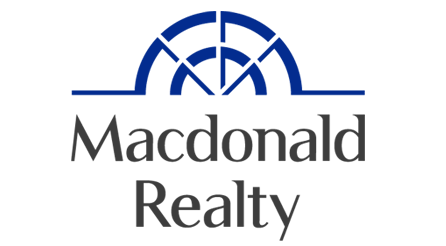
Introduction To Cap Rate In Commercial Real Estate
The capitalization rate, commonly referred to as cap rate, is a fundamental concept in commercial real estate investment analysis. Cap rate serves as a crucial tool for determining the potential return on investment and evaluating the value of income-producing properties. This metric allows investors to compare different properties and make informed decisions based on their financial objectives. Cap rate is calculated by dividing the net operating income (NOI) of a property by its current market value or purchase price.
The resulting percentage represents the annual return an investor can expect from the property’s cash flow. Understanding cap rate is essential for investors looking to assess risk, determine property values, and negotiate deals in the commercial real estate market. By comprehending how cap rates are calculated and analyzing them within the context of market trends and comparable properties, investors can gauge whether an investment opportunity aligns with their financial goals.
Understanding The Components Of Cap Rate Calculation
In commercial real estate, the capitalization rate (or cap rate) is a key metric used to evaluate the profitability of an investment property. To calculate the cap rate, it is crucial to understand its individual components. The first component is the property’s net operating income (NOI), which represents its annual income after deducting operating expenses. NOI is derived by subtracting expenses such as property taxes, insurance, maintenance costs, and management fees from the property’s gross income.
The second component is the property’s market value or purchase price. This figure reflects the current market conditions and should account for any potential future appreciation or depreciation. By dividing the NOI by the market value, you can determine the cap rate. A higher cap rate signifies a potentially higher return on investment but may also indicate greater risk.
Step-By-Step Guide: Calculating Net Operating Income (Noi)
Calculating the net operating income (NOI) is an essential step in determining the cap rate for commercial real estate. Follow these steps to accurately calculate your property’s NOI:
1. Gather Income Data: Collect all relevant income sources, including rental payments, parking fees, and vending machine revenue. 2. Subtract Vacancy Losses: Deduct estimated vacancy losses from the total potential income to account for unoccupied units or spaces. 3. Add Other Income: Include any additional revenue streams such as laundry facilities or storage rentals. 4. Calculate Operating Expenses: Sum up all operating expenses, such as property taxes, insurance premiums, maintenance costs, and utilities.
5. Subtract Operating Expenses: Deduct the total operating expenses from the adjusted gross income to obtain your net operating income (NOI). Remember that accurate data is crucial for an accurate NOI calculation.
Determining The Market Value Of A Commercial Property
Calculating the capitalization rate (cap rate) in commercial real estate requires an accurate assessment of a property’s market value. To determine this value, several factors must be considered. First, conducting thorough market research is essential to understand the current trends and demand for similar properties in the area. This helps identify comparable sales data and recent transactions that can serve as benchmarks for valuation.
Additionally, evaluating the property’s income potential is crucial. Analyzing its historical and projected rental income, along with any additional revenue streams such as parking fees or vending machines, provides insights into its earning capacity. Furthermore, understanding local market conditions and economic indicators is vital. Factors like population growth, employment rates, and infrastructure developments can significantly impact a property’s value.
Applying The Cap Rate Formula: Calculating Cap Rate
Calculating the capitalization rate (cap rate) is an essential step in evaluating the potential return on investment in commercial real estate. The cap rate formula is straightforward and involves two key elements: net operating income (NOI) and property value. To begin, determine the property’s annual NOI, which can be obtained by subtracting operating expenses from gross income. Operating expenses include costs such as maintenance, utilities, insurance, and property management fees.
Next, divide this NOI figure by the current market value or purchase price of the property to obtain the cap rate. The cap rate represents the yield an investor can expect to receive from their investment based on current market conditions. A higher cap rate indicates a potentially higher return on investment; however, it may also suggest a higher level of risk associated with the property.
Conversely, a lower cap rate suggests a safer investment with lower returns.
Interpreting And Analyzing Cap Rates In Commercial Real Estate
Cap rate, short for capitalization rate, is a fundamental metric used to evaluate the profitability and value of commercial real estate investments. Understanding how to interpret and analyze cap rates is crucial for investors seeking to make informed decisions. A higher cap rate indicates a higher potential return on investment, but it may also imply higher risk or poor property conditions.
Conversely, a lower cap rate suggests lower risk and potentially safer investments, but with a reduced return. Comparing the cap rates of similar properties within the same market is essential for benchmarking purposes. A property with a significantly higher or lower cap rate compared to its peers may require further investigation into factors such as location, tenant quality, lease terms, or overall market conditions.
Furthermore, analyzing historical trends of cap rates can provide valuable insights into market cycles and future investment opportunities.
Tips For Using Cap Rate As An Investment Tool
1. Understand the Concept: Before using cap rate as an investment tool, it is crucial to grasp its fundamental concept. Cap rate, short for capitalization rate, is a metric used in commercial real estate to evaluate the profitability and potential returns of an investment property. 2. Research Market Trends: Stay updated on market trends and fluctuations in the commercial real estate sector.
Understanding market conditions will help you identify properties with favorable cap rates and make informed investment decisions. 3. Compare Properties: When analyzing potential investments, compare cap rates across similar properties in the same location or market segment. This comparison allows you to determine whether a property’s cap rate is above or below average, indicating its relative value and potential profitability. 4.
Consider Risk Factors: Take into account various risk factors such as location, tenant stability, lease terms, and property condition when calculating cap rates.


